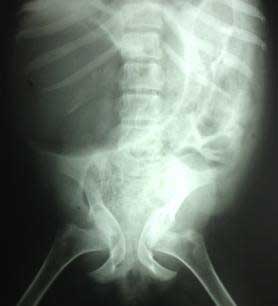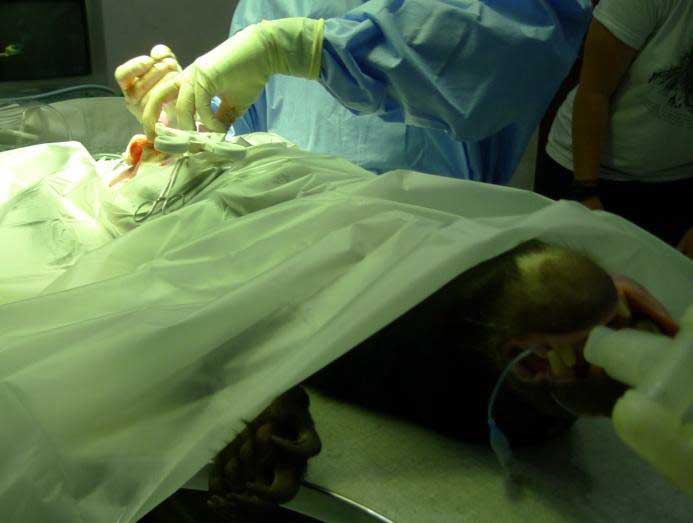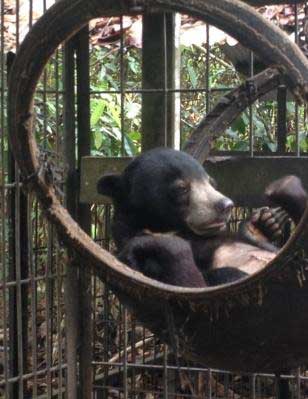“Selina” a female sun bear cub, was originally found in January 2014 abandoned in the forest in Borneo. She was handed over to the wildlife rescue centre in late 2014, and was found to have extreme difficulty passing faeces as well as notable abdominal pain. Prior to her arrival at the wildlife rescue centre, she had suffered trauma, that resulted in fractures of the pelvis and a pelvic deformity when this healed. The narrowing of the pelvic canal made it difficult for her to pass faeces, and unfortunately this chronic obstruction caused permanent damage to her large intestine, resulting in a megacolon. This is when the large intestine becomes permanently dilated and unable to contract. The accumulating faeces cause pain by further distending the already enlarged large intestine, and the large number of bacteria that build up make animals feel chronically ill and nauseous. This condition has some similarities to “Hirschsprung disease in human paediatric surgery patients. Selina had notably stunted growth for a sun bear cub of her age due to her condition.



As she still had a very poor quality of life, and a long-term solution was needed. Specialist wildlife veterinary surgeon Romain Pizzi made a trip to the centre to treat her. Selina was briefly anaesthetised on the 11th August for a detailed examination of her pelvis and x-rays to assess her current condition and plan her surgery. She weighed 10kg. She was then anaesthetised on the 13th August and surgery performed to relieve the obstruction and remove the large section of abnormal damaged large intestine.

An OpLight 180 was used for the surgery, and proved extremely useful. Visibility throughout the surgery would otherwise have been very poor. The retractor provided an ideal combination of good retraction and excellent illumination of the abdominal cavity, and helped limit the size of wound needed, simplifying post-operative care and minimising the risk of post-operative wound complications
Selina has done well immediately after surgery, and appears bright, playful and is eating, and her wound is healing well. While her full recovery will take some time, we are hopeful this surgery will succeed in notably improving her quality of life.
Romain Pizzi BVSc MSc DZooMed MACVS (Surg) FRES FRGS MRCVS
Royal College of Veterinary Surgeons recognised Specialist in Zoo & Wildlife Medicine